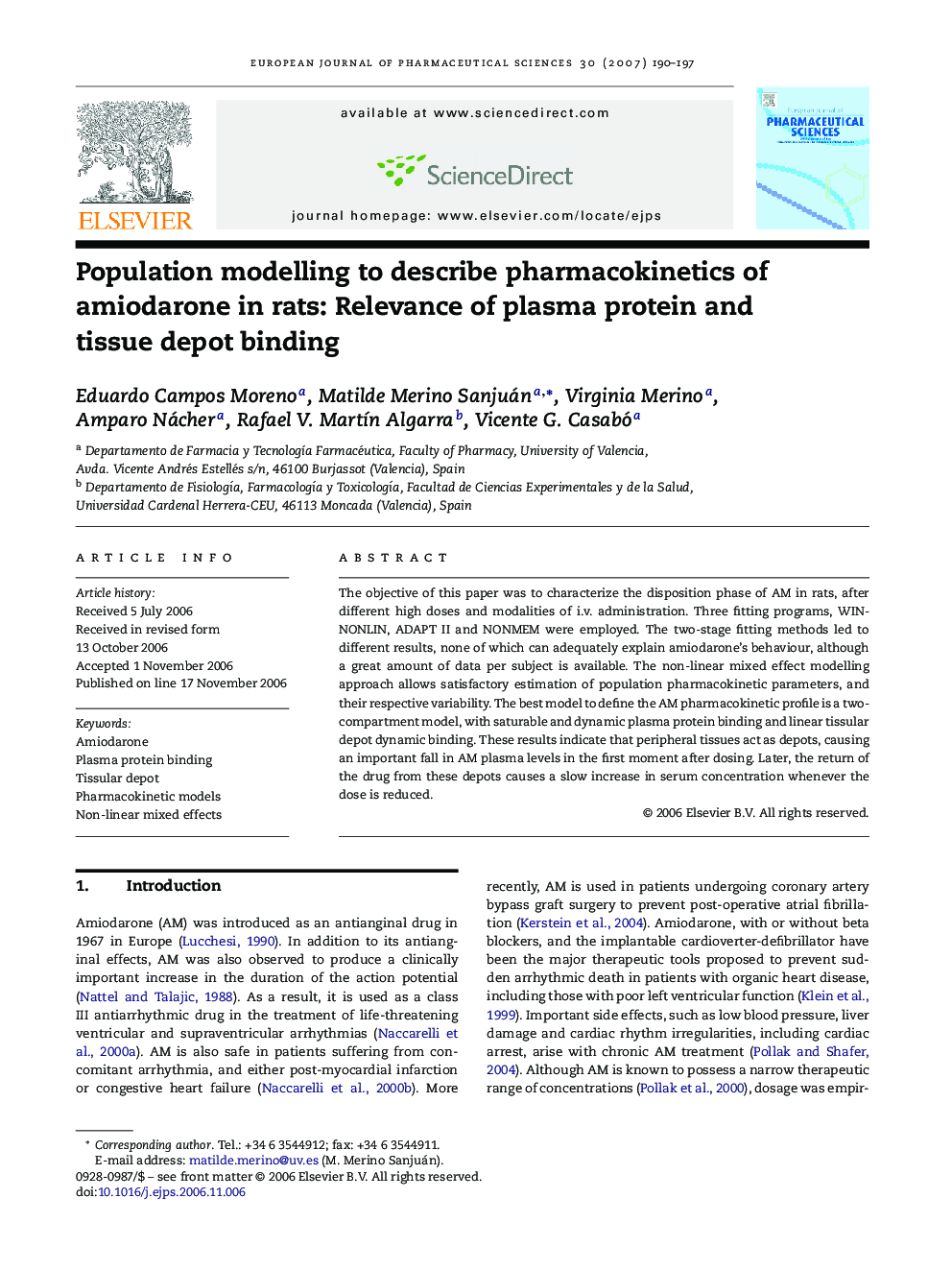| Article ID | Journal | Published Year | Pages | File Type |
|---|---|---|---|---|
| 2482663 | European Journal of Pharmaceutical Sciences | 2007 | 8 Pages |
The objective of this paper was to characterize the disposition phase of AM in rats, after different high doses and modalities of i.v. administration. Three fitting programs, WINNONLIN, ADAPT II and NONMEM were employed. The two-stage fitting methods led to different results, none of which can adequately explain amiodarone's behaviour, although a great amount of data per subject is available. The non-linear mixed effect modelling approach allows satisfactory estimation of population pharmacokinetic parameters, and their respective variability. The best model to define the AM pharmacokinetic profile is a two-compartment model, with saturable and dynamic plasma protein binding and linear tissular depot dynamic binding. These results indicate that peripheral tissues act as depots, causing an important fall in AM plasma levels in the first moment after dosing. Later, the return of the drug from these depots causes a slow increase in serum concentration whenever the dose is reduced.
